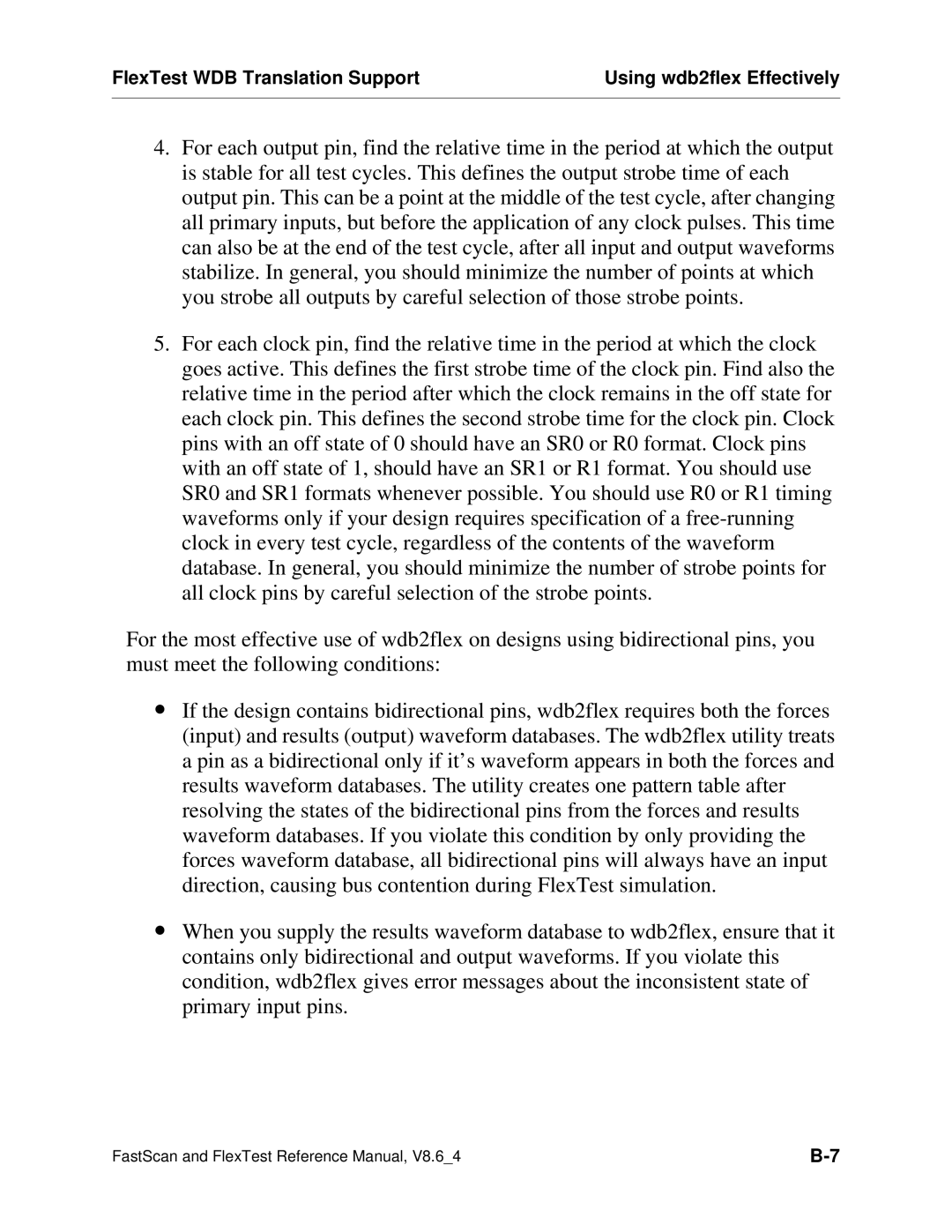FlexTest WDB Translation Support | Using wdb2flex Effectively |
|
|
4.For each output pin, find the relative time in the period at which the output is stable for all test cycles. This defines the output strobe time of each output pin. This can be a point at the middle of the test cycle, after changing all primary inputs, but before the application of any clock pulses. This time can also be at the end of the test cycle, after all input and output waveforms stabilize. In general, you should minimize the number of points at which you strobe all outputs by careful selection of those strobe points.
5.For each clock pin, find the relative time in the period at which the clock goes active. This defines the first strobe time of the clock pin. Find also the relative time in the period after which the clock remains in the off state for each clock pin. This defines the second strobe time for the clock pin. Clock pins with an off state of 0 should have an SR0 or R0 format. Clock pins with an off state of 1, should have an SR1 or R1 format. You should use SR0 and SR1 formats whenever possible. You should use R0 or R1 timing waveforms only if your design requires specification of a
For the most effective use of wdb2flex on designs using bidirectional pins, you must meet the following conditions:
∙If the design contains bidirectional pins, wdb2flex requires both the forces (input) and results (output) waveform databases. The wdb2flex utility treats a pin as a bidirectional only if it’s waveform appears in both the forces and results waveform databases. The utility creates one pattern table after resolving the states of the bidirectional pins from the forces and results waveform databases. If you violate this condition by only providing the forces waveform database, all bidirectional pins will always have an input direction, causing bus contention during FlexTest simulation.
∙When you supply the results waveform database to wdb2flex, ensure that it contains only bidirectional and output waveforms. If you violate this condition, wdb2flex gives error messages about the inconsistent state of primary input pins.
FastScan and FlexTest Reference Manual, V8.6_4 |
